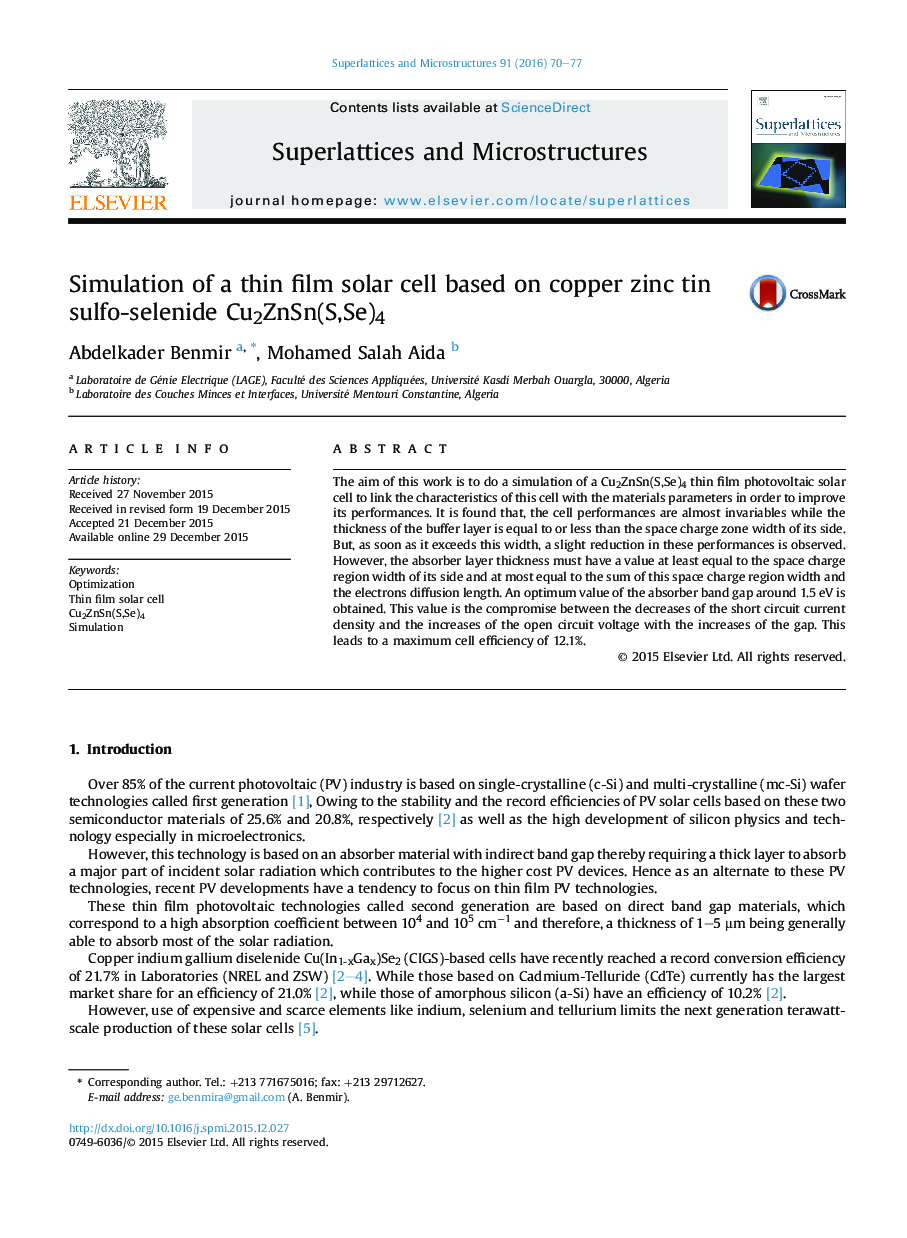| Article ID | Journal | Published Year | Pages | File Type |
|---|---|---|---|---|
| 1552684 | Superlattices and Microstructures | 2016 | 8 Pages |
Abstract
The aim of this work is to do a simulation of a Cu2ZnSn(S,Se)4 thin film photovoltaic solar cell to link the characteristics of this cell with the materials parameters in order to improve its performances. It is found that, the cell performances are almost invariables while the thickness of the buffer layer is equal to or less than the space charge zone width of its side. But, as soon as it exceeds this width, a slight reduction in these performances is observed. However, the absorber layer thickness must have a value at least equal to the space charge region width of its side and at most equal to the sum of this space charge region width and the electrons diffusion length. An optimum value of the absorber band gap around 1.5Â eV is obtained. This value is the compromise between the decreases of the short circuit current density and the increases of the open circuit voltage with the increases of the gap. This leads to a maximum cell efficiency of 12.1%.
Related Topics
Physical Sciences and Engineering
Materials Science
Electronic, Optical and Magnetic Materials
Authors
Abdelkader Benmir, Mohamed Salah Aida,
